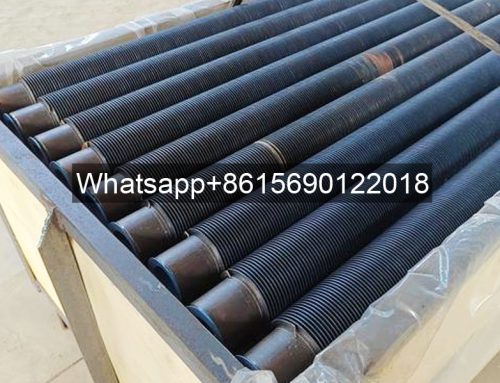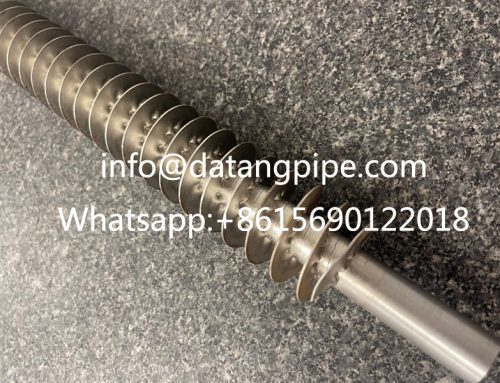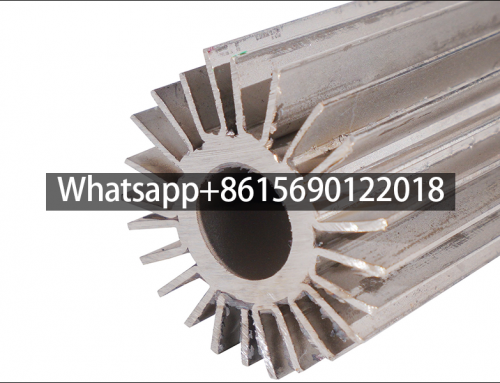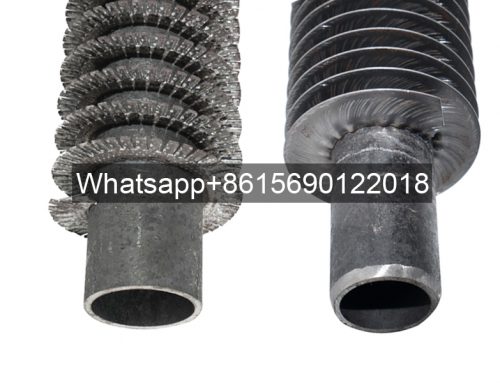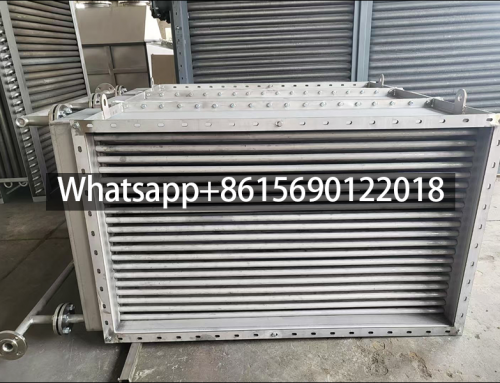Factors Affecting the Heat Transfer Efficiency of Fin Tube Heat Exchangers
Finned tube heat exchangers are a type of heat exchange equipment widely used in industrial and civil fields. Their heat transfer efficiency is affected by many factors. The following is a detailed analysis of the main factors affecting the heat transfer efficiency of finned tube heat exchangers:

Main factors affecting the heat transfer efficiency of finned tube heat exchangers
1. Fin height, thickness, spacing and material
These parameters directly affect the efficiency of the heat exchange process. Fins that are too high may increase the resistance to fluid flow, resulting in a decrease in flow rate, thereby reducing the opportunity for heat conduction. Fins that are too thick will increase thermal resistance, making it difficult for heat to transfer from one medium to another. If the fin spacing is too small, it may limit the channel for heat conduction and affect the heat exchange effect.
2. Fluid flow rate
The choice of flow rate needs to be determined according to the specific working conditions. If the flow rate is too fast, the residence time of the fluid in the finned tube will be reduced, and the opportunity for heat conduction will also be reduced accordingly, resulting in a decrease in heat exchange efficiency. On the contrary, a flow rate that is too slow may cause the fluid to form vortices in the tube, increase thermal resistance, and is also not conducive to heat exchange.
3. Number of tube rows and tube diameter
Too many tube rows may increase the resistance of fluid flow, making it difficult to transfer heat. Too large a tube diameter may reduce the heat exchange area and reduce the heat exchange efficiency. Therefore, a balance needs to be found in the selection of the number of tube rows and tube diameter to achieve the best heat exchange effect.

4. Scaling of heat exchanger
Fin tube heat exchangers are prone to scaling during use, which is also an important factor affecting the heat exchange efficiency. The thermal conductivity of scale is very poor, which will seriously hinder the transfer of heat, thereby reducing the heat exchange efficiency of the heat exchanger. In order to keep the heat exchanger in good operating condition, regular cleaning and descaling are required.
5. Heat transfer power, heat transfer resistance, heat transfer area, heat transfer time
The heat transfer power is mainly determined by the temperature difference, medium flow state, medium flow direction, etc.; the heat transfer resistance is mainly affected by the material, the structural conditions determined by maintenance, etc.; the heat transfer area is mainly affected by the heat transfer surface finish (or roughness), the tube bundle form, the tube bundle shape, etc.; the heat transfer time is mainly determined by the heat exchanger form, the heat exchanger medium flow path, and the ratio of the heat exchanger medium flow volume to the flow area.
Methods to improve the heat transfer efficiency of finned tube heat exchangers
Expand the heat transfer surface:
By increasing the number of fins or changing the shape of the fins, the heat transfer area can be significantly increased, thereby improving the heat transfer efficiency.
Change the flow condition:
Increasing the flow rate, using a rotating flow device or a jet method to spray the heat transfer surface, etc., can enhance the fluid disturbance and improve the heat transfer efficiency.
Change the fluid properties:
Adding a small amount of solid particles to the air flow or spraying droplets into the steam can change the fluid properties and improve the heat transfer efficiency.
Changing the surface condition:
Increasing the surface roughness, changing the surface structure or applying surface coating can change the surface condition and improve the heat transfer efficiency.
Changing the shape and size of the heat exchange surface:
Using elliptical tubes instead of round tubes can change the shape and size of the heat exchange surface and improve the heat transfer efficiency.
Changing the energy transfer method:
Placing convection radiation plates in the flow channel can change the energy transfer method and improve the heat transfer efficiency.
Relying on external force to generate oscillation to enhance heat transfer: Using mechanical or electrical methods, sound waves or ultrasonic methods, electrostatic field methods, etc., external forces can be used to generate oscillations to enhance heat transfer and improve heat transfer efficiency.

Aluminium Fin Tube Air Cooler | Air Cooled Heat Exchanger Manufacturers and Suppliers China OEM Factory
Design optimization of fin-tube heat exchangers
Fin type and tube bundle arrangement: Optimizing the fin type and tube bundle arrangement can enhance heat transfer, save investment, and reduce energy consumption.
Matching fluid properties and operating conditions: According to the physical properties and operating conditions of the fluid, select the appropriate fin type and tube bundle arrangement to achieve high performance, low cost, and long life operation.
Consider multi-objective requirements: When designing and selecting, multi-objective requirements such as heat transfer and resistance, structure and material, manufacturing and cleaning should be comprehensively considered to optimize the fin type and tube bundle layout
Application cases in actual projects
Ultra-supercritical unit condenser design: In the design of the 670,000-kilowatt ultra-supercritical unit condenser, the heat transfer efficiency is improved and the flow rate in the tube is controlled by adopting high-fin tubes, longitudinally encrypted regular triangle layout, and segmented tube bundles. At the same time, the risk of tube bundle vibration is reduced, and the manufacturing difficulty and cost are reduced. Through the above analysis, we can see that there are many factors that affect the heat transfer efficiency of finned heat exchangers, including fin design parameters, fluid flow characteristics, heat exchanger scaling, and design optimization.
In actual engineering applications, it is necessary to consider these factors comprehensively according to specific working conditions and needs to design and optimize finned heat exchangers.


